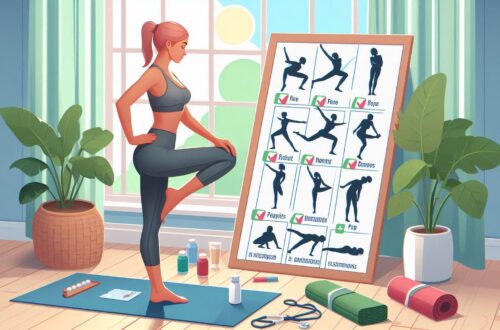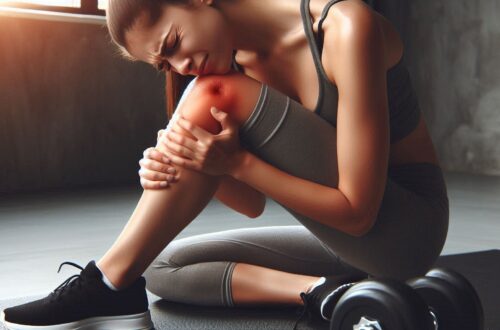So, let’s talk about the hip joint anatomy to kick things off. It’s like a ball and socket, giving us a sweet range of motion but also making it prone to issues. That’s why understanding this structure is your first step to managing any pain you might be feeling.
Now, why does hip pain happen in the first place? From arthritis to injuries or even just standing all day, there are loads of reasons. Knowing these can guide you to the right solutions, whether that’s rest or specific exercises.
Not every ache is just an ache. Watch out for red flags like severe pain, noticeable swelling, or if you’re struggling to move your leg. Any of these could mean it’s time to see a doctor because it’s more than what a few stretches might fix.
Understanding risk factors is huge. Age, weight, or past injuries might make you more likely to experience hip pain. But with the right exercises, you can build a solid foundation and prevent future issues.
Tailored exercises aren’t just for celebrities. Everyone’s different, and what works wonders for one person might not do squat for another. Consulting with a physical therapist to get a personalized plan can make a world of difference. Trust me, your hips will thank you!
Effective Exercises to Relieve Hip Pain
Let’s answer the big question: what’s the best exercise to relieve hip pain? It’s all about what feels right for you. Gentle stretching can do the trick, especially hip flexor stretches or the classic seated butterfly stretch to ease tension.
Picking the right exercise is like picking the perfect pizza topping. It really depends on what you need! Aim for exercises that hit flexibility, strength, and balance.
- Things like tai chi or water aerobics can check all the boxes without stressing those hips too much.
- Stretching is great, but don’t sleep on strengthening exercises.
- Simple moves like bridges or squats can build the muscles around the hip. More support usually means less pain!
While you’re working out, keep safety in mind like you would when driving a car. You don’t want your activities giving back pain as an extra bonus. Don’t push it past comfort, and if something feels off, stop before it gets worse.
And remember, being consistent is key here. Consider making these exercises a regular thing in your day-to-day. A little bit of attention to your hips today can keep them happier down the line.
Expedited Relief Techniques for Hip Joint Pain
Could there be a fast track to easing that hip pain? Absolutely. Often, a bit of heat or cold can be your best friend. A warm compress relaxes tight areas and can really help ease that nagging ache. Ice packs are your go-to when there’s swelling involved.
Now, if you’re feeling brave, a little massage goes a long way. Manual therapy gives muscles some love and can sometimes free up those tight spots that don’t want to let go.
Balancing rest with motion is crucial here—being a couch potato won’t cut it, neither will over-exercising like you’re training for a marathon. Set small, manageable movement goals that keep pressure off but still keep you active.
Sometimes, pain requires more than a DIY approach. Consulting a physiotherapist or chiropractor could provide that expert touch for faster, safer relief. They often have tools and techniques that go beyond what we can do ourselves at home.
Don’t forget that self-care means keeping an eye on those activities that spur pain. Daily routines are crucial, too. Adjustments like sitting properly or the kind of chair you use might seem minor, but they make all the difference.
The Power of Regular Exercise for Long-Term Hip Health
Exercise is like that magic elixir for hips. It doesn’t just tackle today’s pain; it’s your best buddy for future-proofing against issues down the road. You might be asking,: Will hip pain go away with exercise? The short answer is yes, but it’s all about keeping at it.
Consistency isn’t just a good idea; it’s the name of the game. Having a set routine that’s flexible enough to keep you engaged means you’re more likely to stick with it. Mixing up exercises keeps it fresh, whether it’s dance, yoga, or morning walks, so you don’t hit that dreaded plateau.
Physical activities like yoga and pilates aren’t just there to make you look cool. They’re great for improving hip flexibility and overall strength without jarring impacts. With time, these practices help form a solid hip army, ready to fend off pain and keep you moving freely.
Tracking your progress is as important as the exercises themselves. Take notes on what feels good and what doesn’t, and slowly amp up the challenge as things improve. This way, you can gauge what’s working and adjust your routine before boredom or discomfort sets in.
Of course, checking in with your doctor or physiotherapist along the way isn’t a bad move. They can provide guidance tailored to your unique hip history, ensuring that you’re headed in the right direction without missing a beat.
Choosing the Most Effective Hip Exercises
Getting the most out of your workout means picking the right moves. But what is the most effective hip exercise? Think exercises like hip bridges and clamshells. They might not look fancy, but they pack a punch when it comes to strengthening those hip muscles.
Steer clear of trends and stick to methods that are proven by experts for real results. Your time and effort are precious, after all. Keep your exercises varied and balanced, targeting different parts of your hip to ensure you’re covering your bases.
Always listen to your body while you work out. Pain is a signal, time to pause and assess if it’s just muscle fatigue or something more concerning. Adjusting the intensity and reps can help to avoid doing more harm than good.
Getting advice from professionals like physiotherapists can be a game-changer. With their insights, you’re not just picking random routines; you’re crafting a plan that aligns with your specific needs. This can accelerate your results while helping prevent injuries.
Incorporating feedback from these pros into your regimen adds an extra layer of care to your workouts. They can spot issues you might not have noticed and suggest modifications to suit where you are in your journey.






